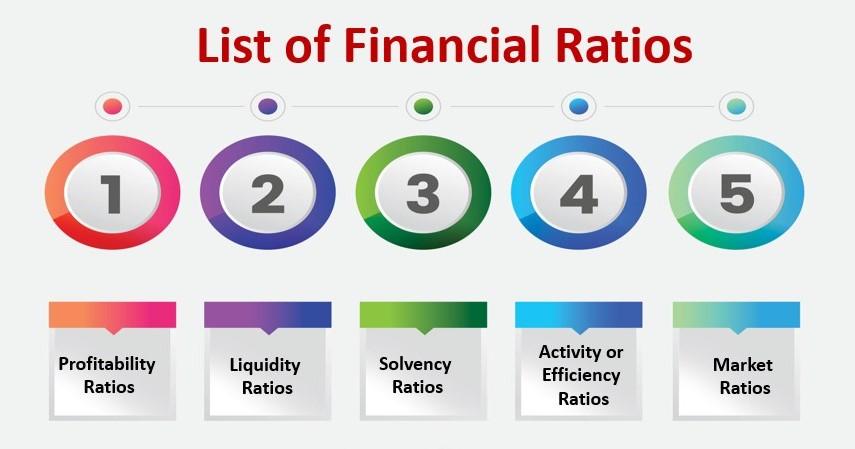
A Comprehensive Guide to Financial Statements
Financial statements are essential documents that provide a comprehensive overview of the financial cash flow, position, and performance of a company. Financial statements are crucial for management, investors, creditors, and regulatory bodies. Financial statements include the following:
Income statement
The income statement is a financial statement that summarizes the revenues, net income, and expenses of the company over a period.
Cash flow statement
A cash flow statement is a financial statement that provides information about the inflow and outflow of cash over a period.
Balance sheet
The balance sheet is a financial statement that provides a summary of the assets, liabilities, and shareholders’ equity of the company.
Financial statements are the cornerstone of financial analyses and actively serve as a reliable source of information in the business world.
Understanding the financial position of the company

Understanding the financial position of the company is just like deciphering a financial puzzle that has the key to the success of the company. By analyzing the financial statements, insights into financial stability and financial health can be gained.
When it comes to understanding the company’s financial position, the balance sheet is key. The balance sheet provides detailed information about the shareholders’ equity, assets, and liabilities. Analyzing these balance sheets helps to gain insights about:
Solvency
The balance sheet helps assess whether the company will be able to meet its long-term financial obligations.
Liquidity
The balance sheet helps to determine whether the company can easily cover its short-term expenses.
Financial Health
The balance sheet examination can reveal trends and changes in the financial health of a company.
How to measure the financial performance of the company?
For understanding how the company is performing financially, income statements can be used. The income statement provides a comprehensive evaluation of profits generated, expenses management, and resources effective utilization.
Profitability
Profitability is one of the key indicators of financial performance. This is typically assessed using metrics such as gross profit margin and operating profit margin.
Revenue
Revenue growth signifies the growing demand for services by the company. Monitoring helps assess the ability of the company to attract customers and adapt to changing market conditions.
Cost management
The company can enhance its financial performance by minimizing expenses and efficiently managing the cost.
Cash flow
Cash flow reflects the ability of the company to manage its day-to-day operations. Monitoring it ensures a company has the necessary resources to meet its financial obligations.
Return on investment
Return on investment calculates the return generated from the capital invested in the company. Monitoring this helps in evaluating the company’s efficiency and performance.
Financial ratios
Financial ratios contribute to understanding the financial performance of a company. Financial ratios reflect the economic health and performance of the company.
How to analyze the cash position of the company?
Cashflow statement is important to analyze and understand the cash position of the company. This can help in assessing the company’s financial health and financial stability. Cash flow statements reflect the cash inflow and outflows during a specific period. By analyzing these, stakeholders can gain insights into the cash position of the company.
The cash flow statement categorizes the activities into the following three sections:
Operating activities
This section includes day-to-day operations generated cash flows like operating expenses, revenue, and working capital.
Financing activities
This section includes cash flow generated through the capital structure and financial activities of the company.
Investing activities
This section includes cash flow generated through sales or return on investments made in the name of the company.
Cash flow statements analysis includes the examination of several key metrics and financial ratios. Operating cash flow and free cash flow are the two commonly known metrics used to represent cash flow. By analyzing these metrics, stakeholders can plan effectively and make informed decisions.
Therefore analyzing the cash flow statements to know the cash position of the company is essential for cash management and financial performance. The cash position of the company reflects the ability of the company to meet its obligations, invest in scaling and growing and create value for customers and stakeholders.
How financial ratios help to evaluate a company's financial health?

Financial ratios are potent options that help evaluate a company’s financial health. They provide insights into the financial condition of a company. By analyzing ratios, areas of improvement can be identified and informed decisions can be made about company finances.
There are the following financial ratios:
Profitability ratio: The profitability ratio is used to analyze the ability of the company to generate profits from its operations.
Liquidity ratio: The liquidity ratio is used to evaluate the ability of the company to meet its short-term obligations.
Solvency ratio: The solvency ratio is used to assess long-term financial viability and its ability to meet long-term debt obligations.
Efficiency ratio: The efficiency ratio is used to evaluate the efficiency of the company in utilizing its resources for generating revenue.
Market Ratio: The market ratio is used to compare a company’s stock price or market value to a specific financial metric.
Return on investment, return on equity, and return on assets are also crucial to measure the ability of a company to generate returns. These ratios indicate better financial performance and higher return on investment.
Therefore, financial ratios play a significant role in evaluating the company’s financial condition and financial health. With the help of these ratios, a company’s performance can be analyzed, and this can help stakeholders to assess risks and make informed decisions.
Limitations of financial statements

Financial statements, along with providing information about the financial performance of the company, have certain limitations also. These limitations are as follows:
Lack of non-financial information:
These statements focus on the financial transaction but don’t capture the non-financial information. This can become critical to evaluate company performance due to a lack of non-financial information as they serve an important role in this.
Incomplete representation:
These statements condense vast amounts of financial data in a summarized way only. This can lead to the omission of important details, which can cause an incomplete representation of the company’s position.
Historical perspectives:
These statements are made based on historical data, and information is gathered from part performance. Due to a lack of current and future financial aspects, these statements may not accurately reflect the company’s financial position.
Limited scope:
These statements may not provide a comprehensive view of a company’s operations and can only provide a summary of financial activities.
Limited comparability:
There can be variations in financial reporting since the company may adopt different policies for accounting and preparing financial statements. This can hinder the comparability of the company to company financial statements, even within the same industry.
Market value ignorance:
As financial statements are made on historical cost accounting principles, they may not show the current market value of assets and liabilities. This can cause misrepresentation and distortions.
Lack of timeliness:
These statements are prepared at the end of the accounting period. This time lag can lead to limitations in using these in decision-making in today’s fast-paced business world.
How can financial statements be used by small businesses?

Financial statements have an important role in helping small businesses in many ways. By analyzing these statements, small business owners can predict their financial health and the performance of potential investments.
Here are how small businesses can utilize financial statements:
- Businesses can evaluate and analyze the profitability of investment opportunities.
- They can use these to align their operation with their long-term objectives.
- They can analyze the potentiality for long-term sustainability.
- These statements can give insights into the cash flows within the business.
- This can help to identify the investment potential and outperform the competitors.
- They can analyze the future growth potential by studying historical performance.
- These statements can help in making informed decisions about the business.
- These statements can help in assessing the financial stability of the business.
Therefore, financial statements help small businesses to make informed decisions by evaluating the financial health, understanding the cash flow, assessing the profitability, comparing ratios, considering the future growth potential, and consulting professionals.
Importance of financial statements for creditors
Financial statements play an important role for creditors. Creditors rely on financial statements for evaluating the credit risk associated with extending credits or loans.
Here are some key reasons for the importance of financial statements for creditors:
- Financial statements provide crucial information about the financial health and stability of small business
- These statements can be used to evaluate the ability of small businesses to generate consistent and sustainable revenue.
- Creditors can take help from these to mitigate the risks associated with proving and lending credit.
- Creditors can use these statements to determine the value and adequacy of the collateral given by the business.
- Business owners can use the financial statements to identify the scope of improvement in financial health and performance.
- Business owners can instill confidence and credibility with potential creditors by being transparent and professionally organized.
Therefore, these statements are important for creditors to assess the credit risk associated with lending money to a particular small business.
Importance of financial statements for management
Financial statements provide small businesses with critical financial information, which helps them to make informed and well-rooted business decisions and perform better management. Financial statements provide an overview of the financial performance of the business.
There are various ways in which financial statements become important for management, as follows:
- By evaluating financial statements, small businesses can evaluate the effectiveness of their strategies and improve if needed.
- Analysis of historical data reflected by the financial statements can help small businesses to project future revenues, expenses, and cash flow.
- Small business can assess their scalability and profitability through financial statements.
- These statements help business owners to evaluate the financial viability and determine the optimal resource allocation.
- Small businesses can utilize these statements to assess and mitigate risks associated with their business.
- These statements help business owners to comply with the legal and regulatory requirements.
Therefore, financial statements provide small business owners with important financial information for better management with better decision-making.
Important of financial statements in mergers and acquisitions
Financial statements have a crucial role in transactions related to mergers and acquisitions. These statements provide insights into the financial performance of the business.
There are various key reasons which contribute importance of financial statements in mergers and acquisitions, as follows:
- Financial statements help business to evaluate their financial viability, which further helps in determining the ability of businesses to generate sustainable revenue.
- These statements provide critical data for valuing the target business during the mergers and acquisition process.
- These statements help business owners to identify their strengths and weaknesses, which is useful in mergers and acquisition processes.
- The financial statement serves as the foundation of due diligence of the business for verifying the financial information provided.
- In the mergers and acquisition process, financial statements facilitate communication with various stakeholders.
- These also assess whether a business is compliant with financial regulations and reporting standards.
Hence, financial statement plays an important role in mergers and acquisition transaction for small businesses. Leveraging the information reflected by the financial statements, the likelihood of beneficial and successful transactions of mergers and acquisitions increases.
GAAP & IFRS

GAAP stands for Generally Accepted Accounting Principles and IFRS stands for International Financial Reporting Standards. GAAP is simply a set of accounting rules and standards that are established by the United States for preparing and presenting financial statements. IFRS is the set of accounting principles and standards established by the International Accounting Standards Board for financial statements.
It is important to understand the convergence between GAAP, and IFRS is an ongoing process. These are the attempt to uniform the framework of financial reporting by establishing standards and principles for accounting. The adoption of these two can help in global consistency, transparency, standardization, comparability, compliance with regulations and laws, and instilling confidence in investors. With the help of the implementation and adoption of these, cross-border investment can be facilitated, and informed decision-making can be ensured.
Tips for analyzing financial statements
Financial statement analysis is crucial for evaluating and understanding the financial health and performance of small businesses. To ensure accurate analysis, there is a need to avoid certain common mistakes and follow best practices. Here are the tips for doing better analysis:
- Before starting the analysis, clearly define the purpose of the analysis. Understanding this will guide your analysis process and help you focus on financial indicators.
- Don’t rely on only one financial statement, rather, consider evaluating multiple financial statements.
- Do trend analysis by comparing the financial statements over a particular time to understand the patterns and potentiality.
- Consider utilizing the financial ratios to gain insights into the performance of the business and its financial health.
- It is important to pay close attention to the cash inflow and outflow to determine the sustainability of the cash flow of the business.
- Try to familiarize yourself with the accounting policies of the business, as these policies impact the financial statement figures.
- Consider multiple financial ratios to form a solid assessment of the business’s financial position.
- If you are still stuck with understanding the complexity of financial statements, consider taking professional advice.
Common mistakes to avoid in financial analysis

- Ignoring non-financial factors while analyzing the financial statements can create a lack of essential parts of the accurate analysis.
- Depending too much only on historical data is a common mistake of many as it is just not enough for perfect analysis.
- Neglecting to update the analysis is not good for accurate analysis needed for better decision-making. Thus, regular review and update is essential.
- Overlooking the footnotes and disclosures is also one of the common problems, as these can significantly impact analysis negatively.
Best practices for financial analysis
- Use financial analysis tools and software.
- Conduct comparative analysis.
- Consider a holistic approach.
- Avoid personal biases and preconceived notions.
- Validate the financial information.
- Understand the impact of macroeconomic factors.
- Continuously update knowledge and skills.
Understanding the financial statements is essential for small businesses. These statements provide all valuable information about the financial health, profitability, and performance of the business. With a solid grasp of financial statements, small business can analyze their business effectively and do continuous improvements in their operations and processes. This helps businesses to achieve their goals and succeed in the long term.
Looking for professional help?
You are at the right place! At Tranquil Business, we understand the challenges and complexity faced by small businesses when it comes to financial statements. Hence we have tailored a comprehensive solution to support small businesses to effectively perform the activities of financial statements and use them for their better decision-making and management.
So why wait? Contact us today to learn more about how we can help you and your business.
